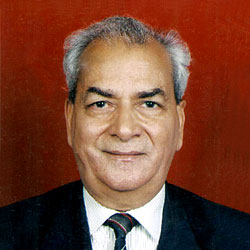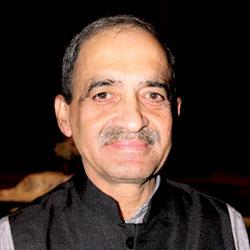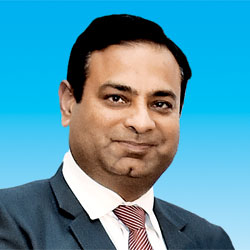India to Have Its First Integrated General Aviation Terminal in Delhi
The terminal is said to have a common lounge, two private lounges, one crew lounge, facilities for shower, a food and beverage counter as well as a small retail area with duty free shopping for international passengers and crew

The Indira Gandhi International Airport in Delhi, India is about to witness the launch of the country’s first integrated general aviation terminal for smaller aircraft. Bird ExecuJet Airport Services (BEAS) Private Limited, which is a joint venture between Bird Group and ExecuJet MRO Services, is setting up the India’s first dedicated terminal for private jets in New Delhi. Speaking to SP Guide Publications about the details of the terminal, BEAS’ CEO Anurag Srivastava stated that the terminal is to be inaugurated soon.
“This is a general aviation terminal which was originally planned as a larger terminal but the traffic growth has not been very encouraging. In addition to that, since the lockdown of March 22, 2020, due to the COVID-19, constructing the terminal has been very challenging. Hence this interim terminal has been constructed right now to be able to cater for 55 passengers per hour,” said Srivastava.
The terminal is said to have a common lounge, two private lounges, one crew lounge, facilities for shower and other utilities along with a food and beverage counter. There will also be a small retail area with duty free shopping planned for international passengers and crew. They can place the order online and collect when they arrive or depart. Additionally when one crosses the retail area, there are three passages, one for baggage screening, second for arrival passage and third one is departure passage. Customs and immigration facility is also available at this terminal for international passengers.
BIRD EXECUJET IS ALSO AN ISBAH (INTERNATIONAL STANDARD FOR BUSINESS AIRCRAFT HANDLERS) STAGE 2 ACCREDITED COMPANY WHERE IN IT ENSURES THAT THE TIME SPENT IN THE FBO, FROM THE POINT WHERE THE TRAVELLER GETS DROPPED BY THE CAR TO THE AIRCRAFT IS ONLY FIVE MINUTES
The facility is expected to consist of 70 plus aircraft parking bays, two aircraft hangars and two fixed-base operators (FBOs) ) to provide aeronautical services; the integrated facility will be capable of handling round-the-clock aircraft movements.
“This is the first fully integrated terminal for smaller aircraft which means everything related to the small aircraft from baggage to customs to immigration will be done here and this would be closer to the operational runway hence save significant time. It will make flying for small aircraft easier and the airport more efficient. This is also creating an enabling infrastructure for them, with separate parking also available for general business aircraft which is very crucial because parking was always an issue earlier,” said Group Captain Rajesh Bali, Managing Director of Business Aircraft Operators Association (BAOA).
Bird ExecuJet is also an ISBAH (International Standard for Business Aircraft Handlers) stage 2 accredited company wherein it ensures that the time spent in the FBO, from the point where the traveller gets dropped by the car to the aircraft is only five minutes. That’s the advantage of this terminal, if you want to sit around, there are a lot of facilities available but if you are in a rush, the time taken from car to the aircraft will be hardly five minutes that’s how the terminal is designed. In front of the terminal, parking is also available for the vehicles of passengers.
“We have the capacity of 55 passengers an hour right now, once the traffic starts to increase and is nearing this limit or crossing it, we will build another terminal, which will be much larger and able to service around 100-120 passengers per hour with more facilities like business centres, conference rooms, crew rooms, lot of food and beverage counters and specially designed menus for food to be delivered to the aircraft. As of now I don’t think more than 10 arrival/departure are allowed in an hour by Delhi International Airport Limited (DIAL) and we are hardly having 30 to 40 passengers per hour movement right now so this terminal should be able to suffice but let’s hope it picks up then we will construct further,” Srivastava added.
“IT IS A GOOD IDEA BUT MONEY IS THE CONCERN. BIRD EXECUJET IS EXPECTED TO SPEND OVER 100 CRORES BY THE END OF THE PROJECT, CONCERN IS HOW THEY WILL RECOVER THIS COST. THE LACK OF PASSENGERS REMAINS UNRESOLVED AND ONLY THE FUTURE CAN TELL HOW IT WILL TURN AROUND. THE GOVERNMENT HAS TO ENCOURAGE BUSINESS TRAVELLING,” —AVM S.S. CHAUHAN, PRESIDENT, BAOA
“THIS IS THE FIRST FULLY INTEGRATED TERMINAL FOR SMALLER AIRCRAFT WHICH MEANS EVERYTHING RELATED TO THE SMALL AIRCRAFT FROM BAGGAGE TO CUSTOMS TO IMMIGRATION WILL BE DONE HERE AND THIS WOULD BE CLOSER TO THE OPERATIONAL RUNWAY HENCE SAVE SIGNIFICANT TIME. IT WILL MAKE FLYING FOR SMALL AIRCRAFT EASIER AND THE AIRPORT MORE EFFICIENT. THIS IS ALSO CREATING AN ENABLING INFRASTRUCTURE FOR THEM, WITH SEPARATE PARKING ALSO AVAILABLE FOR GENERAL BUSINESS AIRCRAFT WHICH IS VERY CRUCIAL BECAUSE PARKING WAS ALWAYS AN ISSUE EARLIER,” —GROUP CAPTAIN RAJESH BALI, MANAGING DIRECTOR, BAOA
“THIS IS GENERAL AVIATION TERMINAL WHICH WAS ORIGINALLY PLANNED AS A LARGER TERMINAL BUT THE TRAFFIC GROWTH HAS NOT BEEN VERY ENCOURAGING. IN ADDITION TO THAT, SINCE THE LOCKDOWN OF MARCH 22, 2020, DUE TO THE COVID -19, CONSTRUCTING THE TERMINAL HAS BEEN VERY CHALLENGING. HENCE THIS INTERIM TERMINAL HAS BEEN CONSTRUCTED RIGHT NOW TO BE ABLE TO CATER FOR 55 PASSENGERS PER HOUR,” —ANURAG SHRIVA STAVA , CEO, BIRD EXECUJET AIRPORT SERVICES (BEAS)
BAOA’s President, AVM S.S. Chauhan (Retd) also stated about the advantage of having a separate terminal along with a specially constructed business lounge for travellers. “It is a good idea but money is the concern. Bird ExecuJet is expected to spend over 100 crores by the end of the project, concern is how they will recover this cost. The lack of passengers remains unresolved and only the future can tell how it will turn around. The government has to encourage business travelling. In countries like America, it is a very important part of the economy; there those who travel in business aircraft are able to take quicker decisions, set up better companies and hence convert time into money. The government facilities are needed as a part of encouraging the economy, especially now when business travel is a much safer option after COVID-19, even studies show that,” Chauhan added.
Srivastava also informed further that they are awaiting BCAS (Bureau of Civil Aviation Security) approval for the inauguration which is at final stages, then a date will be fixed with the Ministry of Civil Aviation (MoCA) and DIAL for the inauguration and then CISF (Central Industrial Security Force) takes over for a day or two.
Along with this terminal, Bird ExecuJet has also built the apron which is 55,000 sq. metre able to park around 55 aircraft of various sizes. “We are able to park up to 45,000 kilos weight capacity MTOW (Maximum Take-off Weight) aircraft on this apron. Above 45, 000 kilos is generally a larger aircraft. We have an understanding with DIAL that they would be parked very close to this apron which is at terminal 3 so that is where we plan to have business aircraft above 45,000 kilos for the service; below 45,000 everything can be accommodated within this apron,” Srivastava said.
As per the International Civil Aviation Organisation (ICAO), there are code A, B and C type of aircraft as per the wingspan of aircraft. This apron has two link taxi ways, one for upto code C compliant and one for upto code B compliant which is linking it to taxi way tango, the parallel taxiway for runway 29/11.” If we are using 29/11 runway and landing and take-off is allowed for business aviation or general aviation aircraft from this runway then the taxi time to this apron is hardly five minutes. This way, operators will save a lot on taxi fuel which was not the case earlier. It used to be a long taxi and they were spending a lot of time before the take off and after they landed,” added Bird ExecuJet CEO.
He further informed that they have built this apron, this whole facility, this whole infrastructure as per the concession agreement with DIAL where Bird Execu-Jet is the concessionaire and DIAL has given this concession to Bird ExecuJet for 21 years in 2016 under which they are obligated to develop this infrastructure, operate it, manage it, construct it, and develop it further as per the growth of the passengers and requirement of the industry for 21 years. “If we see that the traffic is growing in the future, we have some more pocket of land available next to this apron, we can construct more and get more aircraft parked over there.”
According to the aviation regulator Directorate General of Civil Aviation (DGCA), the number of operators with a non-scheduled operator’s permit (NSOP) reached a peak of 147 in financial year 2012, which declined to 111 in 2018. The NSOP fleet in India comprises around 356 aircraft, including helicopters. This is down from a peak of 412 aircraft in financial year 2012. General aviation movements have also remained nearly static over the last nine years, below the 3,00,000 movements per annum mark. In the financial year 2018, the number declined 6 per cent. High aviation turbine fuel taxes and airport charges, and a shortage of hangars and parking slots were reported as among the reasons for the decline.
The awareness around travelling in business and private jets has seen a rise after the pandemic hit, significantly due to the reduced exposure to public gathering that these jets ensure. However, the demand is yet to pick up.
“There are theories around business aviation demand likely to rise due to COVID-19 but it depends on public sentiments and costing that NSOPs give to these people. I have seen that there have been a lot of charter requests during this period but how many have materialised is a question right now,” said Srivastava.
Group Captain Bali agreed that the full utilisation of this “stateof-the-art” terminal might take upto two years because of COVID-19. “But having this terminal is a good thing. We had been waiting for it since 2005 so we are happy about it. This is certainly a trend setter for other developing green fields or other airports in the country. We will make sure that it becomes a model for other airports and we will also try that all the upcoming airports have similar concepts,” he concluded.








